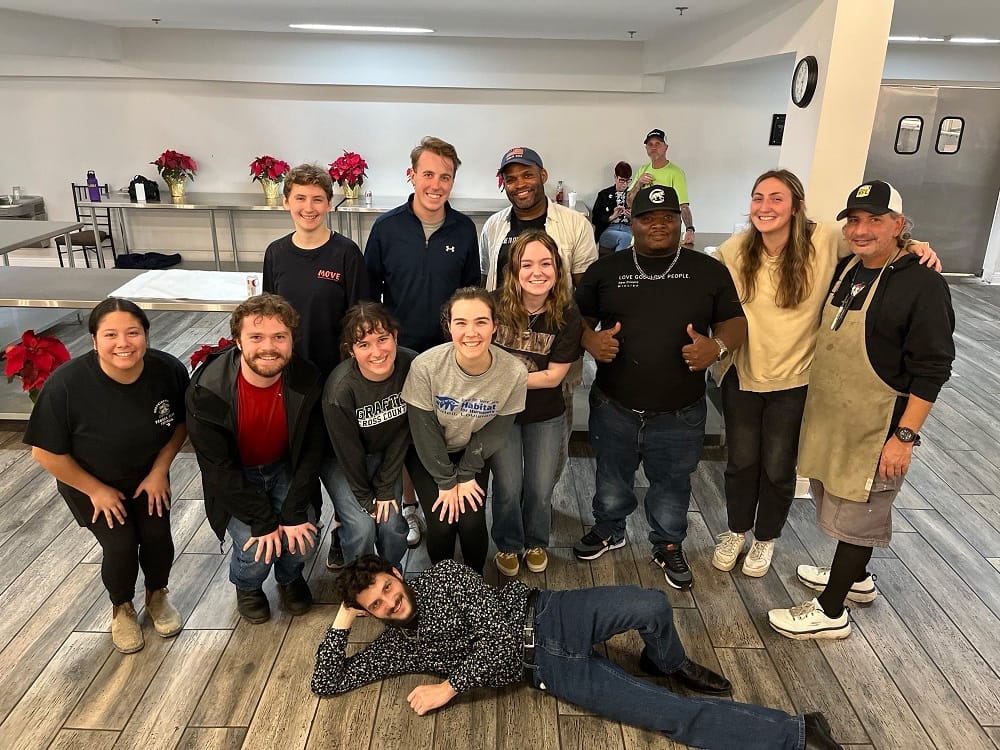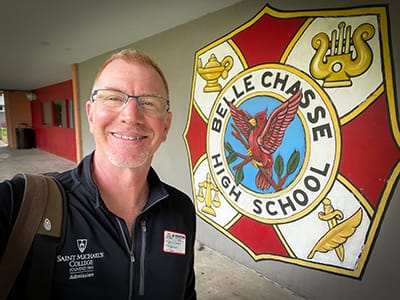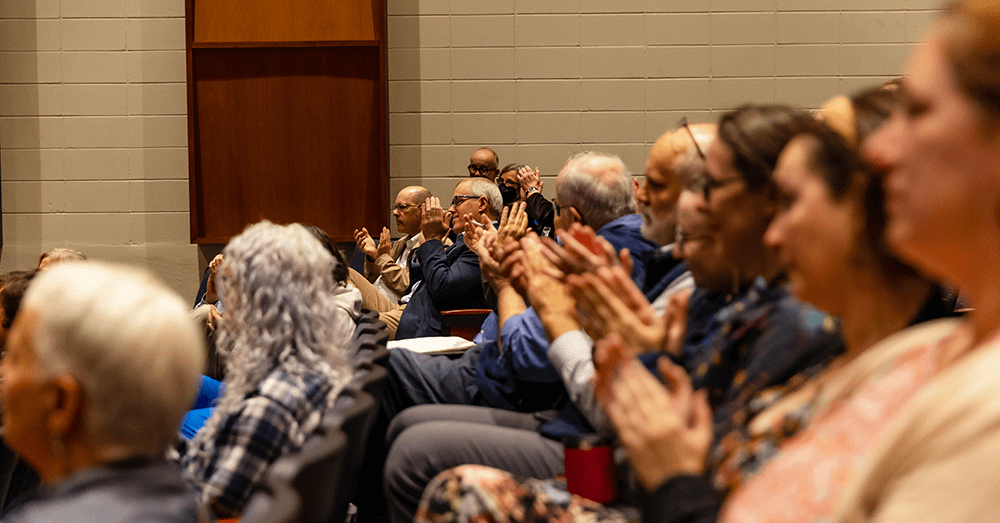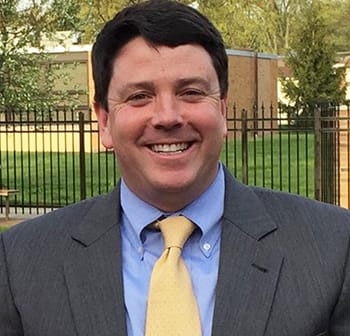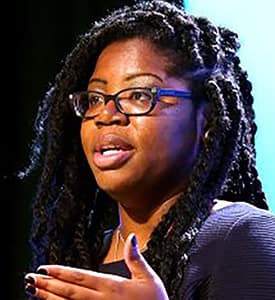Exotic robotics teach and challenge first-year students
The stair-climbing robot that wouldn’t climb stairs, and other “failures” from a First-Year Seminar called “Robotics, Technology and the Evolving Self,” engendered some of the greatest successes from an educator’s point of view, said co-teachers Mary Beth Doyle of the education faculty and William “Sandy” Karstens from physics.
Tuesday morning in the open public space of Dion Family Student Center’s first floor, across from the MakerSpace where they had done much of their work, first-year students demonstrated robots they had built for the seminar – a dog, a car, a bulldozer, even a guitar — illustrating how they and their creations could work together to meet challenges, though admittedly with some assists and improvisations. The robots also incorporated basic physics concepts that students had learned.
President Jack Neuhauser was fascinated to hear a student explain how issues like a gear-failure led the stair-climbing robot group to repurpose their Lego-based creation so it could to pull a trigger for a mini-catapult, itself built by a class member who is a mechanic back home in Rhode Island. It fired a ball into a sensor-target that started a bubble machine, in a madcap sequence worthy of Rube Goldberg. Most of the robots were built using Lego kits with programmable mechanics.
Even beyond the ceaseless motion, whirring sounds, robotic lights and chatting of passing-by observers on the Dion floor Tuesday, there was a lot going beyond robots in the seminar all semester, according to Karstens and Doyle. “We look at the interface between humanity and technology,” said Doyle. With a seminar built around open philosophical conversations, readings and encouragement of robotic creativity, “It unfolds in ways you can’t predict,” said Karstens, now in his second year co-teaching the seminar with Doyle.
They explained that the seminar, as all first-year-seminars at Saint Michael’s, has a heavy literature and reflection component. Students read Isaac Asimov’s I, Robot, a collection of short stories, along with the first-year “Common Read “book by alumna author Luong Ung about surviving the horrors of the Khmer Rouge. “Oddly enough,” says Karstens, “the concept of humanity comes into play again there as you think how humans treated each other and wonder, ‘would an artificial intelligence do that?’ With these philosophical conversations you begin to push their minds, and it’s fascinating to watch that. It’s a very multifaceted course.”
The instructors said students worked in the MakerSpace regularly all semester, with an early requirement being that students take basic instruction on using such equipment as the laser-cutter and 3D printer and working with vinyl. Also, as first-years, the instructors say, they talked a lot just about the college experience –“a lot of almost parenting,” as Karstens puts it “advising them to make sure they keep healthy, hear little things they ought to hear.”
Ultimately the goal for Tuesday’s event was to have all the robots work together in some manner. Hence two robots racing, pushing objects, triggering other creations all leading up to the catapult-bubble machine finale. Mikala Foster, an elementary education and English major with a Spanish minor from Middlebury, VT, was on the stair-climber robot team. “Through this class you learn a lot of life skills because in life, not everything is going to go the way you planned. It encourages to keep working with them and not to give up,” she said.
Cole McGuire, a business administration major from Cranston, RI, built the bulldozer robot, incorporating some of his knowledge of pistons from a hometown part-time mechanic job to make it work. He spent a lot of time alongside classmates and Eric Roy, technical specialist in the MakerSpace, he said. “My general take-away from this class is patience,” he said. “If you’re off a few degrees the whole thing is wrong, and we had some late nights and early days”
Bethany Galusha from Warrensburg, N.Y., a political science/business double-major, said the guitar robot she worked on has an infrared sensor to detect the length at which a bar is set to play different notes based on distance. It took a couple weeks to build and makes music after a fashion, though the process has made her a true believer in the motto “fail fast and fail often,” a favorite of Eric Roy in the MakerSpace. She also is “very interested in organization” and so was the person who choreographed the day’s exhibit and course that had robots working together. Her opinion on the central question of whether the robot in I, Robot was alive was that, yes, it was, based on its “life” springing from relationship with the main character.
Nicole Connor of South Hadley, MA, an elementary education and psychology major, and Keyana Smith of Queens, New York, an English major, showed their dog robot, which was among the liveliest and active on the floor. It was programmed to walk-hop along, with little lighted eyes, Asked if it barks, Keyana said “not yet” — but they planned to program in a bark using another color sensor.
A PowerPoint presentation looped on a screen in the display area showing physics concepts that students had learned and demonstrated with their robots: inertia, friction, acceleration, velocity and more. “Each robot had to incorporate something from the class,” said Cole McGuire.
Eric Roy, the MakerSpace technical specialist, said he also has been helping five other official classes who made some use of MakerSpace this semester, from drawing classes to business. For instance, the winning team for the recent Pitch Your Passion contest in business created many of their prototypes in the space.
He said one of the most important learning objectives “is the tenacity and grit folks get through the iterative process” since all this was so new to the first-years in the robotics class, presenting a steep learning curve.
